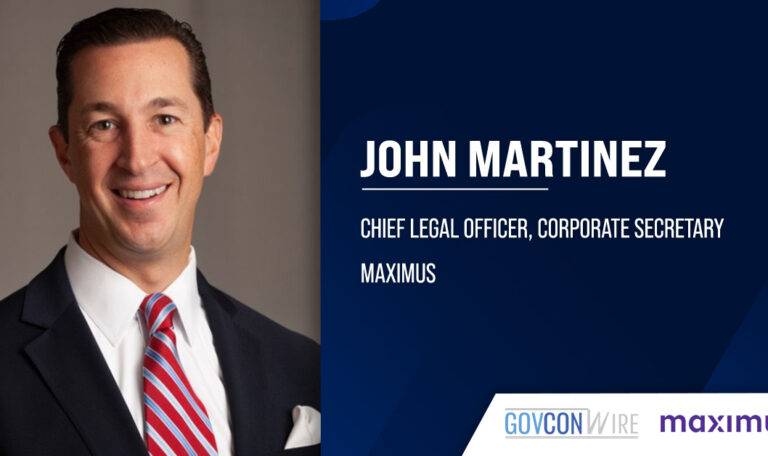GovCon Wire recently spoke with Doug Barton, chief technology officer of the Leidos Health Group, to discuss the challenges in the company’s digital transformation efforts to address the significant mission gaps and future needs as well as drive innovation for greater capabilities.
In addition, Barton also provided a first-hand look into how the federal sector is using artificial intelligence and machine learning to address some of the biggest challenges in our landscape, including the implementation of zero-trust during the latest Executive Spotlight interview.
“They are often inherently insecure. And our customers are unable to patch them without voiding the certification of the medical device. As a result, it’s necessary to wrap security around those devices. Zero trust architectures provide a lot of tools to help address that, and we’re doing quite a bit of work in that space.”
You can read the full Executive Spotlight interview with Doug Barton below:
GovCon Wire: With the influence of emerging technologies impacting every aspect of business, how has your company been able to drive digital transformation efforts to stay ahead of innovation in the federal landscape for yourself and your customers?
Doug Barton: “At Leidos, technology is always viewed through the lens of service to our customer’s mission. We start with the mission. We look for mission gaps and future mission needs. We use that as a framework when we assess and invest in technology.
To solve a mission need, we must have a large ‘toolbox’ of technology. We continually scan the marketplace for emerging technologies. We have a dedicated senior leadership team that works with technology advisory services and the venture capital community to continually assess the state of the marketplace.
We also talk to our customers to understand where they are making technology investments and the challenges they intend to address with those investments.
As we deploy technology in service of the mission, we strive to meet our customers where they are today. At its core, digital modernization is about taking an existing infrastructure and upgrading it in some way or replacing a system at scale.
For instance, we recently went live at Brooke Army Medical Center with the MHS GENESIS system, replacing an existing, bespoke legacy system with a complex of commercial products. This is modernization at scale and was quite successful.
Of course, any change we make must be secure. This is an absolute imperative. Security is at the center of all our digital modernization programs.”
GovCon Wire: With zero-trust technology becoming a major focal point moving forward, what can you tell us about the difficulties of implementing zero-trust architectures and focusing on data security?
Doug Barton: “Right now, our customers are working to implement zero-trust architectures in response to the Executive Order. It’s important to note that zero trust architectures are not new. They’ve been out there for quite some time. And there is a plethora of products available to support zero-trust implementations. The challenge is how to get there from where you are today.
Most of our customers’ security infrastructures do not conform to zero trust architecture principles today. They have a variety of commercial products that have been integrated into their environment over the years.
The question is how best to move forward while preserving their current investments? What will give our customers the biggest bang for their buck given the products that are already deployed? Can those products be configured or integrated to move forward toward a zero trust architecture, or do those products need to change?
We have developed a zero-trust maturity model to assess where our customers are in terms of their security posture. This is especially helpful in the healthcare market. There are, for instance, long-standing issues with the security of medical devices.
They are often inherently insecure. And our customers are unable to patch them without voiding the certification of the medical device. As a result, it’s necessary to wrap security around those devices. Zero trust architectures provide a lot of tools to help address that, and we’re doing quite a bit of work in that space.
Another challenge is to quantify the mission or business value provided by investments in cybersecurity. I am often asked, what value is provided to the business by “another pound of cybersecurity”? And how should that value be assessed against investment in other areas like a new MRI machine?”
GovCon Wire: With artificial intelligence and machine learning impacting most industries and the U.S. military dramatically as we move forward, what has impressed you the most about the technology’s capabilities to improve decision-making across the federal sector and all areas? In addition, how can AI be used to address some of the biggest challenges you see in your industry?
Doug Barton: “I’ve been impressed with how AI can be applied to cyber operations to identify threats and then assist operators to respond to those threats by automating a counteraction or by augmenting the operator’s ability to rapidly respond.
We use AI/ML models to improve operational efficiency in the delivery of healthcare. And AI models can provide valuable insight into issues of equity and diversity in healthcare delivery. A related issue is ensuring that ML models are not inherently biased.
We do fundamental research in counter-AI or protecting models from adversarial attack; model transparency, or how to explain why an ML model is producing the result that it provided and model evolution, or how to maintain models over time.
But I would emphasize that AI/ML is not magic. It’s a tool in the toolbox, albeit a powerful one. For the right problem, if AI/ML is the right tool, then we have folks who can help use this tool to provide the best solution.”
GovCon Wire: We often discuss innovation from the technical or capability side. What are some of the unique challenges that you’ve seen on the business side of innovation that haven’t been addressed or discussed enough?
Doug Barton: “We’re seeing movement toward contracting for managed services in the federal market, and that’s changing the way we think about utilizing technology. In a managed service, we’re utilizing technology to deliver that service instead of delivering the technology directly. That’s a different deployment model and a different investment model.
Managed service models also give us more flexibility on how rapidly we can innovate. We believe these models permit us to provide more value to our customers, to do so more rapidly, and to reduce or eliminate our customer’s need for capital investment.
But whatever the business model, it’s always about the mission or business objective first and foremost—then we apply technology.”















